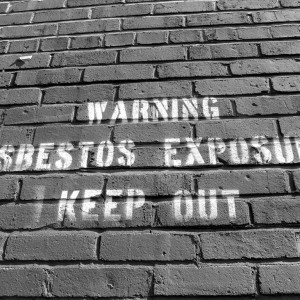Asbestos occurs naturally in mineral form and is a strong, heat-resistant fibre, however, it is also a tiny and potentially deadly component used to strengthen man-made materials.
Materials containing asbestos are called ACMs. The fibres are “700 times smaller than human hair,” and when broken up an ACM will release the toxic particles into the air. Once the asbestos fibres are airborne it is much harder to contain and they become much more dangerous for people.
If you want peace of mind that you’re family is safe from the harmful effects of exposure to asbestos. Here are some common places which may contain asbestos & that you should have tested today:
1. Isolation: This is the area that first comes to most people’s mind when you mention the threat of being exposed asbestos. To prevent the fibres from being released into the air, the insulation can be coated, or encapsulated, or even wrapped in protective sheets. However the best way to make sure your home is protected is to remove it according to the recommendations of an experts.
2. Roofing & Siding. Orlando roofer says: if left intact or covered with other materials, roofing and siding containing asbestos aren’t too harmful.
3. Pipes & Ducts: Asbestos “blankets” were commonly used to insulate pipes and ducts, they are extremely dangerous if removed or cut without using the right protective measures to damper the release of particles.
4. Ceiling Tiles: These were commonly used for their practicality in being insulating and fire resistance in many schools, hospitals and businesses. They are low risk if left undisturbed and covered with the right protective sealant to avoid releasing the harmful asbestos fibres.
5. Wallpaper/Paint: In older homes, this is a common place to find asbestos. If their are signs of cracking or chipping it is suggested to contact a professional to test it, however if there is no damage you can simply paint over the walls to prevent the fibres from becoming airborne.
6. Furnace & Stove Coverings: These are a source of extremely dangerous asbestos if the fibres are released into the air. It is highly recommended to contact a professional to remove them using the right preventative measures.
7. Floor Coverings: These are very similar to ceiling tiles containing asbestos. The fibres are tightly woven together and pose a low risk of becoming airborne if protected from damage. The vinyl tiles can also be easily covered by other materials and if done correctly they won’t cause problems in the home.
8. Wall Compounds: Joint compounds, putties, and patching cement manufactured before 1981 contain asbestos. If your home was built before the mid-1980’s it is highly likely you’ll find asbestos in the walls. The asbestos fibres can be released simply by sanding over the compounds with a piece of sandpaper.
9. Decoration & Acoustics: If your home has “popcorn ceilings” chances are you’ve got asbestos! It was used as an inexpensive way to both decorate and insulate a home. If you can live with it that is the best way to prevent the fibres from contaminating your home, however if you wish to get rid of them, we highly suggest contacting a professional.
If you suspect you might have asbestos in any of these areas of your home or business, send us a sample today (or contact us & we will come to you). Our team of experts at Axxonlab will work hard to give you quick and precise analytical services with a quick turnaround time!


3 Comments
Outstanding article there. Take care!
I think this is one of the most important info for me. And I am glad to read your article. But want to remark on few general things, The web site style is wonderful, the articles is really nice : D. Good job, cheers
hey there and thank you for your information – I’ve definitely picked up something new from right here. I am adding this RSS to my email and will look out for much more of your exciting content.